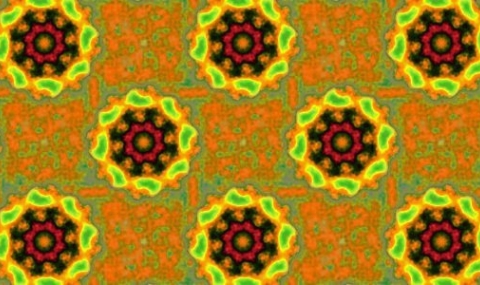Malaria remains a widespread and devastating illness in many parts of the world. In collaborative projects we apply novel three-dimensional microscopy methods to study the blood-borne parasite that causes disease.
The Plasmodium parasite invade the red blood cells, where they multiply rapidly by schizogeny. Rather than dividing to pairs. Each cell multiplies into multiple daughters, typically 16, which acquire separate membranes only at the end of the process.
Using “serial surface” imaging in the focused ion beam – scanning electron microscope (FIB-SEM), we followed the distribution of nuclear pores across the major stages of the cell cycle. Unexpectedly, these correlated with striking changes in the distribution of heterochromatin.
3D FIB-SEM imaging of Plasmodium at 3 stages of the cell cycle: ring, trophozoite, and schizont. The nuclear pores appear in yellow and heterochromatin in blue. Note the condensation of the heterochromatin in the schizont stage and the proximity of nuclear pores to euchromatin regions.
Using soft X-ray cryo-tomography (SXT) we examined the nucleation of hemozoin, the malaria pigment by which the disease is diagnosed. The parasites digest the host cell hemoglobin in the acidic “digestive vacuole”, so releasing the iron-carrying heme. Free heme is highly toxic, however. Detoxification involves sequestering of the heme into physiologically insoluble crystals of hemozoin. The common drugs taken against malaria interfere with this crystallization process.
Lipids are believed to be involved in the nucleation process, which was suggested to occur within lipid droplets, or alternatively at the lipid-water interface. Contrast in soft X-ray tomography is based on the difference in X-ray absorption between carbon and oxygen atoms, so lipids appear quantitatively against the aqueous background. We found that hemozoin is nucleated in the water phase at the inner membrane of the digestive vacuole, with the {100} orientations facing the membrane. This is consistent with a stereochemical match between acyl lipid heads and exposed carboxyl groups in the hemozoin crystal.

Hemozoin crystals (dark or red) forming adjacent to the inner membrane surface of the digestive vacuole, as seen in soft X-ray cryo-tomography. Hemoglobin transport vesicles (blue) are also seen.
Linked references
- Weiner A†, Dahan-Pasternak N†, Shimoni E, Shinder V, von Huth P, Elbaum M, Dzikowski R (2011) 3D nuclear architecture reveals coupled cell cycle dynamics of chromatin and nuclear pores in the malaria parasite Plasmodium falciparum. Cell Microbiol. 13:967-77.
- Kapishnikov S, Weiner A, Shimoni E, Guttmann P, Schneider G, Dahan-Pasternak N, Dzikowski R, Leiserowitz L, Elbaum M. (2012) Oriented nucleation of hemozoin at the digestive vacuole membrane in Plasmodium falciparum. Proc Natl Acad Sci USA 109:11188-93.



